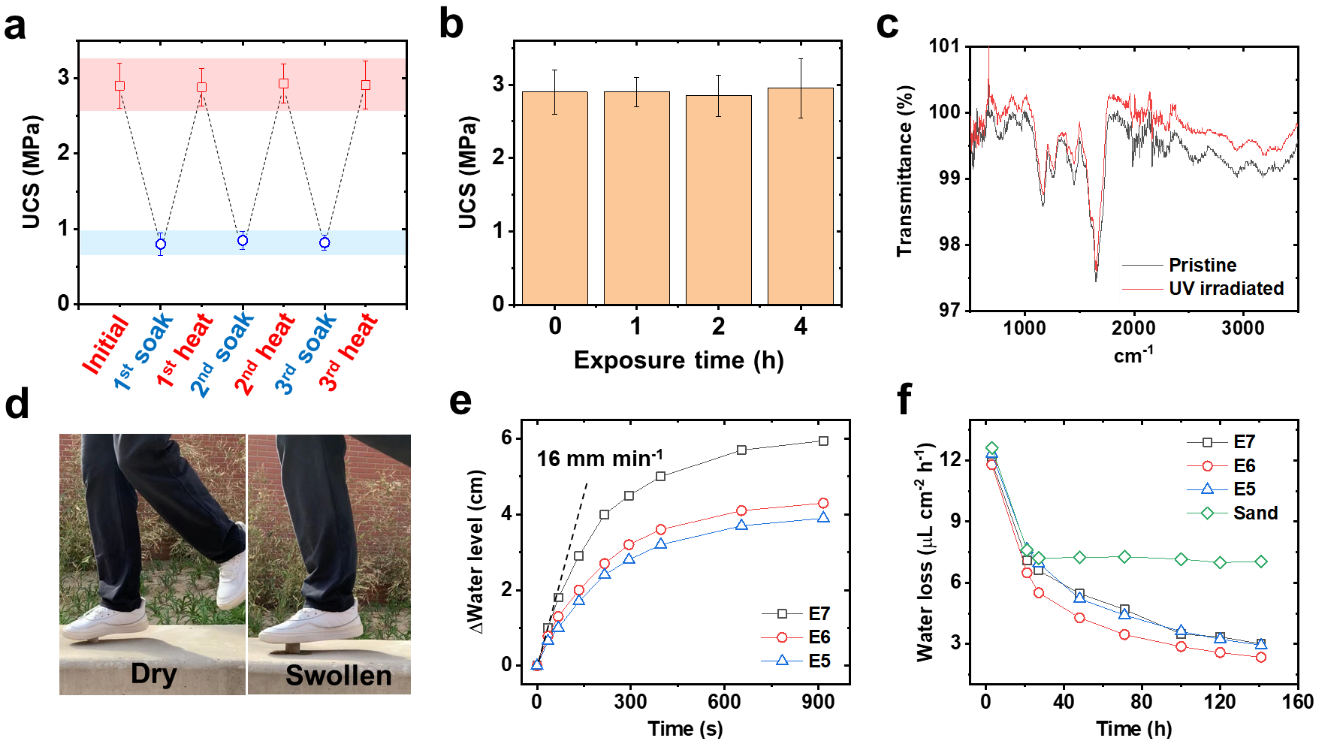Employing hydrogels as a substitute for cement in soil stabilization is believed to have great environmental benefits. However, current hydrogel soil stabilizers cannot function properly in wet conditions due to swelling-induced structural deformation and mechanical weakening, which significantly limits their applications. To overcome current technical limitations and achieve sustainable cement-free soil stabilization, we developed a water-resistant hydrogel soil stabilizer that worked under both dry and wet conditions inspired by the mussel byssal. Carefully formulated precursors containing methacrylic acid and acrylamide were poured into soils and cured via in-site polymerization. The synergic effect of intermolecular hydrogen bonding and hydrophobic interactions led to the formation of heterogeneous mussel mimicry microstructures that possessed superior toughness (up to 2.1 MJ/m3) and ultra-low swelling ratios. Soils strengthened with such hydrogels maintained great strength (up to 2.9 MPa) in both air and water, which had never been achieved before. The intrinsic water affinity of hydrogels also ensured a decent permeability and retention ability of water, which was critical to the ecosystems. In conclusion, a tough, water-resistant, and multi-functional mussel mimicry hydrogel has been devised. It holds great promise as the next-generation cement-free, ecofriendly, and sustainable soil stabilizers.
Publication: https://doi.org/10.1021/acs.chemmater.2c02350

Figure 1. Overview of the mussel mimicry hydrogel. (a) Scheme of a mussel and a byssal and the SEM image of the cuticle, core, and plaque. The SEM images are reproduced with permission from ref. . Copyright CC BY 4.0. (b) Scheme of hydrogel-stabilized sand particles and SEM images corresponds to the shell, core, and interface. Note that the scheme is not drawn to scale in order to better illustrate the role of the hydrogel. (c) Scheme of the hydrogen bonding and hydrophobic interactions in the mussel mimicry hydrogel.

Figure 2. Environmental compatibility tests. (a) UCS of hydrogel-stabilized soils under repeated soaking–heating cycles. (b) UCS of hydrogel-stabilized soils under intensive UV irradiation. (c) FT-IR spectra of pristine and UV-irradiated hydrogel samples. (d) Pictures showing the robustness of stabilized sand columns after being left outside for a month. (e) Water infiltration performance of sands fixed by precursors E5–E7. (f) Water retention tests for pure sands and sand columns fixed by precursors E5–E7.